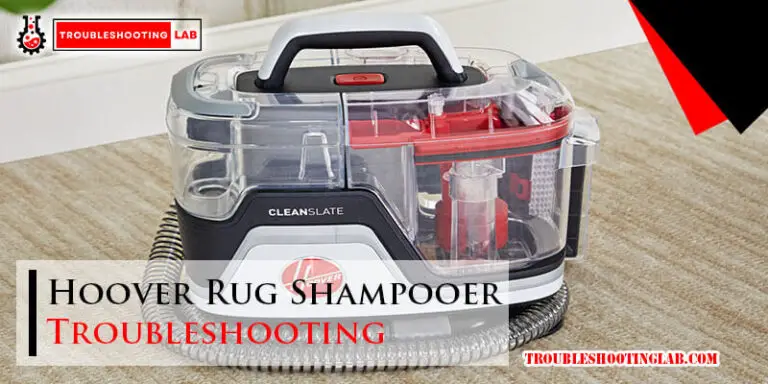Sloan Automatic Flush Valve Troubleshooting: Expert Guide & Tips
Dealing with a malfunctioning Sloan automatic flush valve can be frustrating. These valves are vital for maintaining restroom hygiene.
Understanding how to troubleshoot these issues is essential for facility management. Sloan automatic flush valves are known for their reliability, but even the best systems can encounter problems. From constant running water to weak flushing, various issues can arise. Knowing how to identify and fix these problems can save time and reduce costs.
This blog will guide you through common troubleshooting steps. You’ll learn how to address different issues effectively. By the end, you will have the skills to keep your Sloan flush valve in top working condition. Read on to become an expert in solving these common problems.

Credit: www.youtube.com
Introduction To Sloan Automatic Flush Valves
Sloan automatic flush valves are popular in many public restrooms. These devices ensure a clean and hygienic environment. They work by automatically flushing toilets and urinals. This helps to maintain cleanliness without manual intervention.
Importance Of Flush Valves
Flush valves are crucial for maintaining restroom hygiene. They help in water conservation by controlling the amount of water used per flush. This can result in significant savings over time. Public restrooms with automatic flush valves are generally cleaner. They also help in reducing the spread of germs and bacteria.
Common Issues Encountered
While Sloan automatic flush valves are reliable, users may encounter issues. Common problems include:
- Continuous Flushing: This issue wastes water and can be annoying.
- Weak Flush: This problem can cause the toilet to remain dirty.
- No Flush: Sometimes, the valve fails to activate a flush.
To address these issues, consider the following troubleshooting steps:
- Check the battery. Replace if necessary.
- Clean the sensor. Ensure it is free of obstructions.
- Inspect the valve diaphragm. Replace if worn out.
A quick inspection can often resolve these problems. Regular maintenance ensures the flush valves function correctly. This helps in maintaining a clean and hygienic restroom environment.
Tools And Materials Required
Troubleshooting your Sloan Automatic Flush Valve can be a straightforward task. With the right tools and materials, you can resolve most issues quickly. This section will guide you through the essential tools and recommended materials you need.
Essential Tools
- Adjustable Wrench – Used for loosening and tightening connections.
- Screwdriver Set – Both flathead and Phillips for removing screws.
- Plumber’s Tape – Ensures a tight seal on threaded connections.
- Allen Wrench Set – For adjusting and removing Allen screws.
- Plunger – Useful for clearing minor clogs.
Recommended Materials
- Replacement Gaskets – To replace worn-out seals.
- Cleaning Cloths – For wiping down parts and removing debris.
- Lubricant – To ensure smooth operation of moving parts.
- Replacement Cartridges – For fixing persistent flush issues.
- Bucket – To catch any water spills.
| Tool | Purpose |
|---|---|
| Adjustable Wrench | Loosening and tightening connections |
| Screwdriver Set | Removing screws |
| Plumber’s Tape | Ensuring a tight seal |
| Allen Wrench Set | Adjusting and removing Allen screws |
| Plunger | Clearing minor clogs |
| Material | Purpose |
|---|---|
| Replacement Gaskets | Replacing worn-out seals |
| Cleaning Cloths | Wiping down parts and removing debris |
| Lubricant | Ensuring smooth operation |
| Replacement Cartridges | Fixing persistent flush issues |
| Bucket | Catching water spills |
Identifying The Problem
Identifying the issue with your Sloan Automatic Flush Valve is crucial. Fixing the problem swiftly can save water and maintain hygiene. Start by observing the flush valve closely. Check for signs of wear or damage.
Visual Inspection
Begin with a visual inspection. Look for any visible cracks, leaks, or blockages. Ensure the water supply is turned on. Check if the valve is correctly aligned. Inspect the surrounding area for water spots or drips.
Here are steps for a thorough inspection:
- Check the valve cover for damage.
- Inspect the diaphragm for wear and tear.
- Ensure the flush handle is not loose.
- Look for any debris around the valve.
Common Symptoms
Next, identify common symptoms of malfunction. These symptoms can help pinpoint the specific issue. Here are some frequent problems:
- Continuous Running: The flush valve keeps running without stopping.
- Weak Flush: The flush is not powerful enough.
- Partial Flush: The toilet only partially flushes.
- No Flush: The valve does not flush at all.
Each symptom suggests a different problem. For instance, a continuous running flush could mean a faulty diaphragm. A weak flush might indicate low water pressure or a clogged valve.
Here is a quick reference table for symptoms and potential causes:
| Symptom | Potential Cause |
|---|---|
| Continuous Running | Faulty diaphragm or valve seat |
| Weak Flush | Low water pressure or clog |
| Partial Flush | Incorrect handle alignment |
| No Flush | Water supply off or stuck valve |
Understanding these symptoms helps in troubleshooting effectively. Use this guide to identify the root cause and proceed with the right fixes.

Credit: sloanrepair.com
Fixing A Non-functioning Valve
Experiencing issues with a Sloan automatic flush valve? Learn how to troubleshoot common problems and fix a non-functioning valve quickly. This guide offers easy-to-follow steps for a smooth repair process.
A non-functioning Sloan Automatic Flush Valve can be frustrating. Understanding the root cause is essential. The issue may involve the power supply or sensor malfunctions. This guide will help you troubleshoot effectively.Checking Power Supply
First, ensure the power supply is functional. Check if the batteries are installed correctly. Replace the batteries if needed. If using a hardwired power supply, inspect the connections. Ensure the wires are secure and there is no visible damage. Test the power outlet with another device to confirm it is working.Sensor Malfunctions
The sensor plays a vital role in the valve’s operation. Clean the sensor with a soft cloth. Dirt or grime can interfere with its function. After cleaning, test the valve to see if it works. If cleaning doesn’t help, check the sensor’s alignment. Ensure it faces the user correctly. Adjust the position if necessary. If the sensor still does not respond, it may need replacement. “`Resolving Continuous Running Water
Resolving continuous running water issues with your Sloan automatic flush valve can save water and reduce your utility bills. This common problem can be fixed with a few simple steps. Let’s dive into the solutions.
Checking For Obstructions
First, check for obstructions in the flush valve. Debris or dirt can block the valve, causing it to stay open. Remove the flush valve cover and inspect the diaphragm. Clean any visible dirt or debris. Make sure the bypass orifice is clear. This small hole can easily get clogged. Use a pin or small wire to clear it.
Replacing Worn Parts
Worn parts can also cause continuous running water. Inspect the diaphragm and the guide assembly. Look for signs of wear, such as cracks or tears. If you find any, replace the worn parts. Install new parts following the manufacturer’s instructions.
Check the handle assembly for wear. A worn handle can cause the valve to stay open. Replace the handle if needed. This simple fix can often solve the issue.

Credit: www.youtube.com
Addressing Weak Flushes
A weak flush can be frustrating. It often leaves waste behind. This can be due to several reasons. It’s important to address the issue quickly. This guide helps you understand common causes and solutions.
Inspecting Water Pressure
The first step is to check the water pressure. Low water pressure can cause weak flushes. Make sure the water supply valve is fully open. Check for any kinks in the supply line. If the pressure is still low, you may need a plumber. They can inspect for deeper issues.
Adjusting Flush Volume
Another common issue is the flush volume. It may be set too low. To adjust, locate the flush volume control on the valve. Turn it to increase the water flow. This should help improve the flush strength. Always check the manufacturer’s instructions for guidance.
Maintenance Tips
Maintaining a Sloan Automatic Flush Valve ensures it works efficiently. Regular care extends the valve’s life and prevents issues. Follow these maintenance tips to keep your flush valve in top shape.
Regular Cleaning
Clean the flush valve exterior monthly. Use a soft cloth and mild soap. Avoid harsh chemicals. These can damage the valve’s surface. Clean the sensor eye to ensure proper operation. Use a soft cloth for the sensor. Prevent water spots by drying the valve after cleaning.
Routine Inspections
Inspect the flush valve weekly. Check for leaks around the valve. A small leak can lead to bigger issues. Ensure the valve is securely mounted. Tighten any loose connections. Listen for unusual sounds. These can indicate a problem. Check the battery life of sensor-operated valves. Replace batteries as needed to avoid malfunctions.
When To Call A Professional
Sometimes, troubleshooting your Sloan Automatic Flush Valve can be complex. You might face issues that require a professional’s expertise. Knowing when to call a professional can save you time and prevent further problems.
Signs You Need Help
- Persistent Leaks: If water leaks continuously, despite adjustments, seek professional help.
- Inconsistent Flushing: Flushing issues, even after cleaning and adjusting, need expert attention.
- Unusual Noises: Loud or strange sounds during flushing can indicate a deeper problem.
- Water Damage: Signs of water damage around the valve area should be addressed immediately.
Choosing A Qualified Technician
Finding the right technician is crucial. Here are some tips to help you choose:
| Criteria | Details |
|---|---|
| Certification | Ensure the technician is certified and trained in plumbing. |
| Experience | Look for technicians with experience in Sloan Flush Valves. |
| Reviews | Check online reviews and ask for recommendations. |
| Warranty | Choose a technician offering a warranty on their work. |
Following these guidelines can help ensure your Sloan Automatic Flush Valve is in good hands.
Frequently Asked Questions
Why Is My Sloan Flush Valve Not Working?
A common cause is a clogged or dirty diaphragm or filter. Clean or replace as needed.
How Do I Fix A Leaking Sloan Flush Valve?
Check for a worn-out diaphragm or gasket. Replace these parts to stop the leak.
Can A Sloan Flush Valve Be Adjusted?
Yes, you can adjust the flow rate by turning the control stop screw on the valve.
Why Does My Sloan Flush Valve Keep Running?
A continuous run can be due to a faulty diaphragm or a stuck handle. Replace or repair these parts.
How Often Should I Maintain My Sloan Flush Valve?
Inspect and clean the valve every 6 months to ensure proper function and prevent issues.
Conclusion
Fixing your Sloan Automatic Flush Valve doesn’t need to be hard. Follow these steps to troubleshoot common issues. This guide will help keep your restroom in top shape. Consistent maintenance ensures smooth operation. You can avoid many problems with regular checks.
Simple solutions often solve big problems. Keep your restroom functioning well. Happy troubleshooting!






